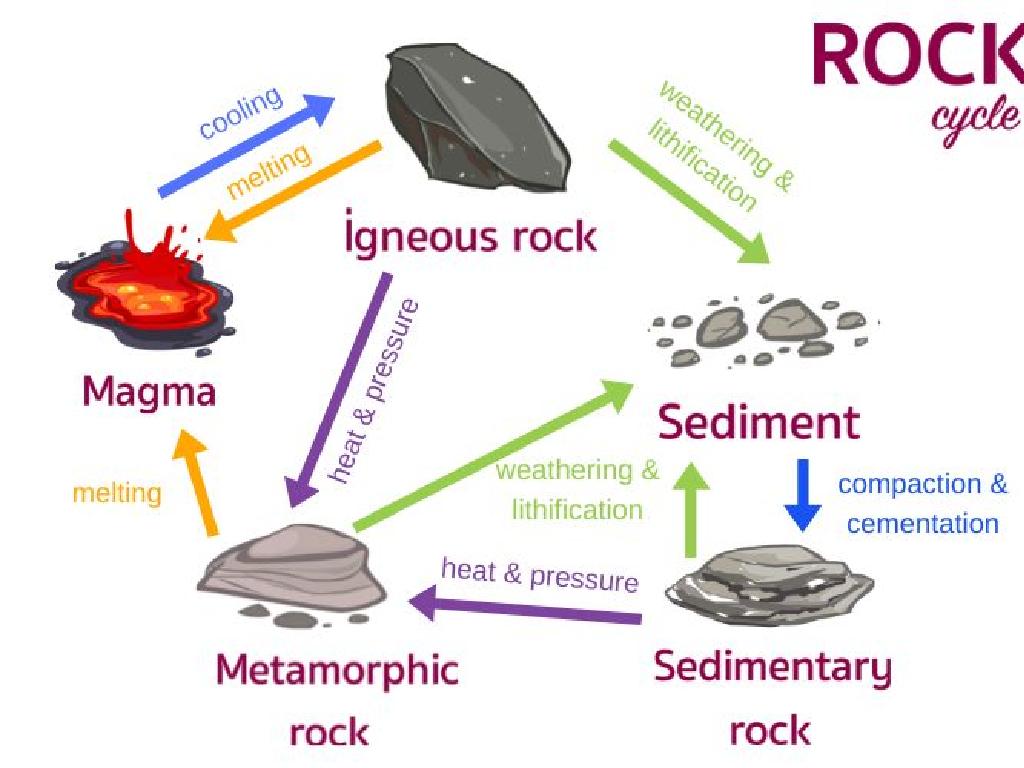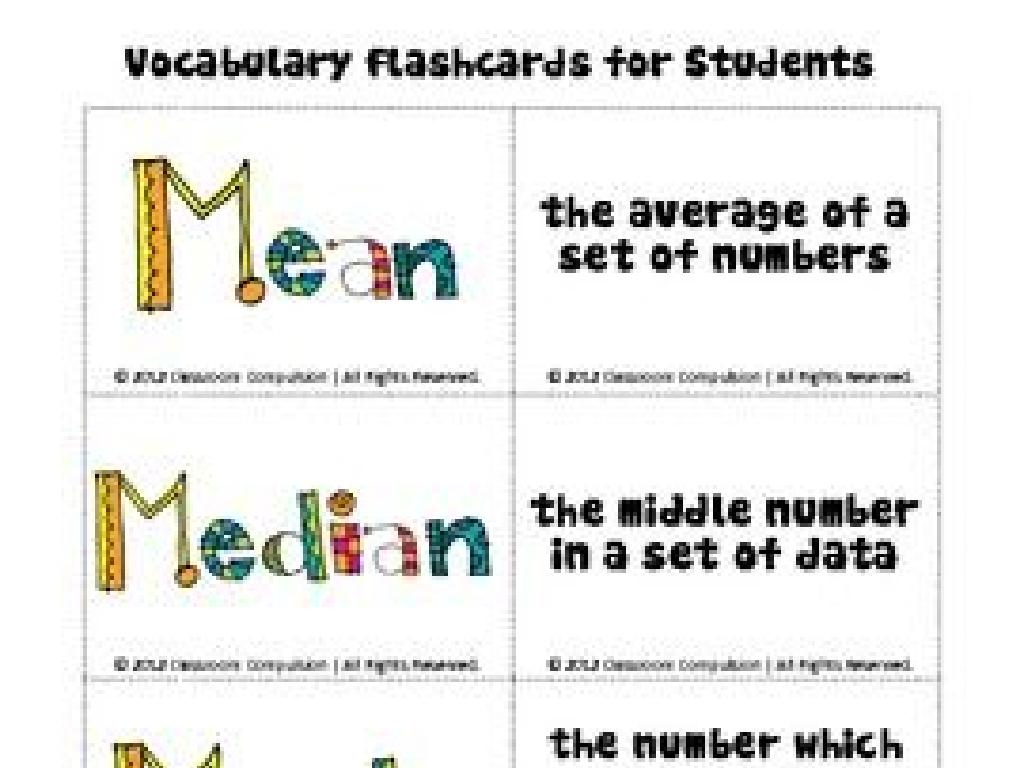Determine The Meaning Of A Word With -Ly Or -Ness
Subject: Language arts
Grade: Third grade
Topic: Prefixes And Suffixes
Please LOG IN to download the presentation. Access is available to registered users only.
View More Content
Exploring -ly and -ness in Words
– Learn about -ly and -ness
– Suffixes that modify word meanings
– Create new words with -ly and -ness
– ‘Quick’ becomes ‘quickly’, ‘happy’ turns into ‘happiness’
– Understand how meanings change
– ‘Quickly’ means doing something fast, ‘happiness’ means the state of being happy
– Become a word detective
|
This slide introduces the concept of suffixes, specifically -ly and -ness, to third graders. Explain that suffixes are added to the end of words to change their meaning. The suffix -ly often turns adjectives into adverbs, indicating how something is done. For example, ‘quick’ becomes ‘quickly’, showing how an action is performed. The suffix -ness turns adjectives into nouns that describe a state or condition, such as ‘happy’ to ‘happiness’, referring to the state of being happy. Encourage students to think of words they know and how adding -ly or -ness changes their meanings. Plan an activity where students can practice turning adjectives they know into adverbs or nouns using these suffixes.
Exploring Suffixes: -ly and -ness
– What is a suffix?
– A word part added to the end of a base word.
– Suffixes change meaning
– They can change what a word means and its grammar role.
– Example: happiness
– ‘happy’ becomes ‘happiness’, showing the state of being happy.
– Example: slowly
– ‘slow’ becomes ‘slowly’, describing how an action is done.
|
This slide introduces the concept of suffixes to third-grade students, focusing on ‘-ly’ and ‘-ness’. A suffix is a letter or group of letters added to the end of a word to change its meaning or its part of speech. For example, adding ‘-ness’ to ‘happy’ turns an adjective into a noun, ‘happiness’, which refers to the state or quality of being happy. Similarly, adding ‘-ly’ to ‘slow’, an adjective, turns it into an adverb, ‘slowly’, which describes the manner in which an action is performed. Encourage students to think of more words they know and discuss how adding ‘-ly’ or ‘-ness’ changes those words. This understanding will help them decode unfamiliar words in reading and enrich their writing skills.
Exploring -ly in Words
– ‘-ly’ turns adjectives to adverbs
– Adjectives like ‘happy’ become ‘happily’
– It shows how actions are done
– Like ‘slow’ becomes ‘slowly’, showing the manner of action
– Example: ‘quick’ to ‘quickly’
– ‘She quickly answered the question’
– Demonstrates the use of ‘quickly’ in a sentence
|
This slide introduces the suffix ‘-ly’ and its function of changing adjectives into adverbs, which describe verbs. It’s important to explain that adverbs tell us how something is done, often ending in ‘-ly’. Use the example ‘quick’ becoming ‘quickly’ to illustrate the point. Encourage students to think of other adjectives and how they might change when ‘-ly’ is added. Have them practice by using these new adverbs in sentences, both orally and in writing, to reinforce the concept.
Exploring -ness Suffix
– ‘-ness’ turns adjectives into nouns
– It changes describing words into things
– Describes a state or condition
– Like ‘happiness’ means being happy
– Example: kind to kindness
– ‘Kind’ describes someone. ‘Kindness’ is the act of being kind.
– Recognize ‘-ness’ in words
– Find ‘-ness’ in your favorite books
|
This slide introduces the suffix ‘-ness’ and how it transforms adjectives into nouns, representing a state or condition. Use ‘kind’ to ‘kindness’ as a clear example, showing that ‘kindness’ refers to the quality or state of being kind. Encourage students to think of other adjectives they know and discuss how adding ‘-ness’ changes the meaning. Ask them to look for words with ‘-ness’ in their favorite books or stories as homework, and bring examples to the next class. This will help them understand and recognize the use of ‘-ness’ in different contexts.
Let’s Practice with -ly and -ness!
– Turn adjectives into adverbs with -ly
– Change adjectives into nouns with -ness
– Example: ‘happy’ becomes ‘happily’
– ‘Happy’ describes a feeling; ‘happily’ tells how something is done.
– Example: ‘graceful’ becomes ‘gracefulness’
– ‘Graceful’ is a quality; ‘gracefulness’ is the state of being graceful.
|
This slide is for a class activity to help students understand how to use the suffixes -ly and -ness to change words from one form to another. Start by explaining that -ly turns adjectives into adverbs, which describe actions, and -ness turns adjectives into nouns, which describe states or qualities. Use ‘happy’ and ‘graceful’ as examples. For ‘happy’, guide the students to add -ly to make ‘happily’, which describes doing something in a happy way. For ‘graceful’, show them how to add -ness to make ‘gracefulness’, which is the state of being graceful. Encourage the students to come up with their own examples and write them down. The activity will help reinforce their understanding of how suffixes change the meaning and grammatical role of words.
Using -ly and -ness in Sentences
– Create sentences with -ly
– Create sentences with -ness
– Example: ‘quickly’
– ‘The dog ran quickly to catch the ball.’
– Example: ‘fairness’
– ‘The fairness of the game made everyone happy.’
|
This slide is designed to help students practice using the suffixes -ly and -ness to form adverbs and nouns, respectively. Start by explaining that -ly is often added to adjectives to turn them into adverbs, which describe how something is done. Then, explain that -ness is added to adjectives to form nouns that describe a state or quality. Provide students with words and have them create their own sentences. Encourage creativity and understanding of the sentence context. For the activity, give each student a different word and let them come up with sentences, then share with the class to reinforce learning.
Word Creation Challenge: -ly & -ness
– Pair up for a word hunt
– Find words ending with -ly or -ness
– Create sentences with new words
– Use your words to make fun, imaginative sentences
– Share your best sentences in class
|
This class activity is designed to engage students in exploring the use of suffixes -ly and -ness. By working in pairs, students will brainstorm a list of words that end with these suffixes, which typically turn adjectives into adverbs (-ly) or nouns (-ness). After compiling their lists, each pair will create original sentences using their chosen words, allowing them to practice and understand how these suffixes change the meaning and function of words in a sentence. Encourage creativity and praise unique or particularly illustrative sentences. Possible activities for different pairs could include focusing on just -ly or -ness, finding words in a specific category (like emotions for -ness), or creating a short story using the words. This will help reinforce their understanding of suffixes and their impact on word meaning.
Detective Work: -ly & -ness Homework
– Congrats on learning -ly and -ness!
– Find a -ly word in your book
– Look for a word ending in -ly, like ‘quickly’
– Find a -ness word in your book
– Search for a word ending in -ness, like ‘happiness’
– Write a sentence for each word
– Use each word in a sentence that shows its meaning
|
Well done to all the word detectives for learning about the suffixes -ly and -ness! As homework, each student is tasked with finding one word that ends with -ly and another that ends with -ness in their reading books. They should then write a sentence for each word to demonstrate their understanding of the word’s meaning. This exercise will help reinforce their knowledge of how these suffixes alter the meaning of root words and how they can be used in context. Encourage creativity and remind them to bring their sentences to the next class for sharing and discussion.






